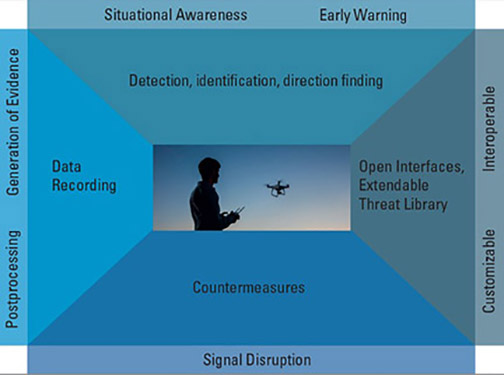The latest offering of Inside GNSS’s continuing professional education series explores in depth what is likely the hottest topic at PNT technical gatherings over the last two years: Detection and geolocation of GNSS interference sources. This September’s ION GNSS+ conference devoted 4 full technical sessions to interference, and across the program at least 28 technical papers and a tutorial focused on the issue. Clearly it is of the moment, as well as complex to understand and counter.
As unintentional interference becomes more widespread, as intentional jamming becomes more sophisticated, and as more and more valuable infrastructure depends on GNSS integrity and continuity, the matter demands the urgent and continual vigilance of all GNSS and PNT providers: designers, manufacturers, integrators, users and government responsibles. Real-world incidents of GNSS signal jamming have become increasingly frequent, potentially interfering with safety and reliability as well as productivity. GNSS interference is now an everyday reality, and challenge, in many commercial sectors.
Leading experts who have recognized, tracked down, identified and characterized these phenomena in the field share their research and solutions in this “deep dive” into the technology of interference detection.
Professor Fabio Dovis from the Department of Electronics and Telecommunications of Politecnico di Torino, where he coordinates the Navigation Signal Analysis and Simulation (NavSAS), will discuss the relative ease with which GNSS signals can be jammed, relate some recently reported incidents, and contrast and compare pure cyber-hacking with GNSS signal spoofing. While multi-frequency receivers offer some robustness to jamming, they are not a panacea.
Guy Buesnel, PNT Security Technologist at Spirent Communications, will demonstrate how to determine an interfering source’s impact on a receiver and will evaluate the impact of 1dB C/N0 decrease on a selection of GNSS receivers, using a PNT test bench. He will also discuss the need for risk assessment when deploying GNSS-dependent systems, as unexpected behavior can result otherwise, with very significant impacts.
Paul Alves, Technology Manager for Corrections Services at NovAtel, will take the audience through interpreting time-difference-of-arrival (TDOA) and power-difference-of-arrival (PDOA) to find interference sources, and show how to derive contour plots revealing the combined location likelihood of the interfering source. Use of the Interference Tool Kit will take listeners through spectrum analysis to obtain power spectrum examples, and show how the the ITK provides absolute power within 5 dB accuracy independent of temperature, receiver design, interference type, interference frequency band (in-band/out-of-band), receiver model, and manufacturing variance.
Several case studies, at international airports, on highway systems, in metropolitan areas and more, are investigated, compared and discussed by these three experts, with test results and data showing how results were obtained and probable jamming sources identified.
The session will furnish valuable insights for the design, manufacture, use and troubleshooting of a broad range of GNSS-reliant products, systems and infrastructure.
The three expert panelists gather on Wednesday, October 30, 2019 from 1:00 PM – 2:30 PM Eastern time (12 – 1:30 Central, 11 am – 12:30 Mountain, 10 – 11:30 Pacific, 1800h – 1930h Central European time, 5 – 6:30 pm United Kingdom) to deliver this free webinar.
Registration is now open. The free webinar is sponsored by Inside GNSS and NovAtel.






